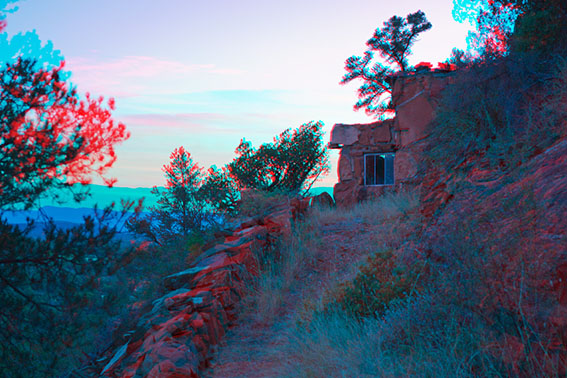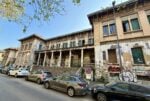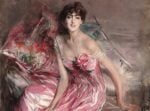Maxime Rossi – It’s a zodiac rain

Perpetrando in un metodo che consiste nella collaborazione con artisti e artigiani del presente e del passato, Maxime Rossi sviluppa una ricerca di rimandi curiosi, in cui le opere svelano precise storie.
Comunicato stampa
La galleria Tiziana Di Caro inaugura la mostra personale di Maxime Rossi (Parigi, 1980) intitolata It's a zodiac rain, venerdì 18 dicembre 2015 alle ore 19:00, nella sua sede al primo piano di Palazzo de Sangro in piazzetta Nilo, 7 a Napoli.
Sono passati due anni da Kemosabe, prima mostra personale di Maxime Rossi in Italia, che si tenne nello spazio salernitano e che dedicava una serie di opere (fotografie, sculture, performance) a Max Ernst, le cui suggestioni Rossi ha avuto modo di esplorare durante un viaggio in Arizona, luogo che dal 1941 al 1953 ospitò l'artista tedesco in fuga dall'Europa e dalla guerra, dove egli realizzò alcuni dei suoi più importanti capolavori.
Perpetrando in un metodo che consiste nella collaborazione con artisti e artigiani del presente e del passato, Maxime Rossi sviluppa una ricerca di rimandi curiosi, in cui le opere svelano precise storie. Il tempo ed il passaggio costante dal passato al presente e vice versa rappresentano la linea su cui l'artista francese elabora il suo lavoro. It's a zodiac rain sembra voler riprendere il discorso là dove è stato sospeso due anni fa. Ruotando ancora una volta su Max Ernst, la mostra include due film, una serie di fotografie e un altro gruppo di opere già incluse in Kemosabe, che rappresentano una sorta di déjà-vu della mostra salernitana, che funge da collegamento tra i due momenti.
Two owls on a mountain … and a snake at the bank inquadra una macchina che attraversa l'inconfondibile paesaggio del Canyon. Non si hanno tanti elementi per capire che a guidare l'auto è Max Ernst e ad accompagnarlo è Dorothea Tanning; i due stanno attraversando l'America da est ad ovest e una volta giunti tra le colline rocciose, Ernst realizza che quei paesaggi che lui credeva di aver inventato, che per tanti anni aveva immaginato e dipinto, nella realtà esistevano, decidendo di fermarsi a vivere lì, in un rifugio Hopi scavato nella roccia. Quest'ultimo è il soggetto di una serie di fotografie in 3D, in cui esso è descritto dettagliatamente attraverso precisi particolari, alcuni dei quali sono inequivocabilmente legati a Ernst. Le foto fanno sì che il visitatore possa approdare al fulcro del progetto, il film in 3D Real estate astrology (Astrologia immobiliare) del 2015. Il titolo è tratto da una pratica che consiste nell'utilizzare l'astrologia al fine di scegliere una casa ed è molto utilizzata a Sedona, città che nel tempo è divenuta un centro importante per la pratica New Age.
Seguendo i passi di Max Ernst a Sedona, Maxime Rossi esplora il particolare paesaggio dell'Arizona e l'incantevole aspetto del suo deserto esteso e roccioso, che ha profondamente segnato lo spirito ed il lavoro dell'artista in esilio. Mentre le immagini descrivono i luoghi, la voce di un astrologo ci guida attraverso queste architetture individuate servendosi di calcoli stellari, per poi fare il punto su Ernst, il quale ci viene raccontato attraverso il suo quadro astrologico (quello di Andrè Breton, menzionato all’inizio del film, non era corretto, poiché calcolato con 30 minuti di differenza rispetto alla reale ora di nascita di Ernst, per questo motivo è stato rettificato successivamente).
Maxime Rossi, servendosi dell'astrologia e della tecnologia 3D, ci offre un viaggio in cui il misticismo non si sostituisce, ma si aggrega alla storia, ponendosi sul medesimo piano in un ordine di intenti. Real estate astrology rivela la sua complessità anche dal punto di vista tecnico, infatti, è stato editato da due diverse persone, che hanno lavorato in modo separato producendo due diverse sequenze, una per l’occhio destro e l’altra per l’occhio sinistro. L’utilizzo degli occhiali 3D, che sono blu e rossi, enfatizza i colori del paesaggio descritto nel film (dove le rocce appaiono senza blu e rosse).
Ancora una volta Maxime arricchisce il suo lavoro di molti significati, coinvolgendo diverse persone, idee ed energie, lasciando che il visitatore si sposti da un tema ad un altro in una esperienza di eterni rimandi alle volte magici.
Maxime Rossi è nato nel 1980 a Parigi (Francia). Vive e lavora a Parigi. Tra le mostre personali: Halle des Bouchers, Vienne/ Biennale de Lyon - Resonnace 2015, Real Estate Astrology, Galerie Allen, Parigi, GDM, Parigi, Mynah Dilemma, a cura di Marc Bembekoff, Palais de Tokyo, Parigi, Francia (2012), Bouquet fleuri, bouquet flétri. C’est au choix, Project Room, Galerie Anne de Villepoix, Parigi, Francia (2010), Ummagumma (con Armand Jalut), EMBA/Gal Ed Manet, Gennevillers, Francia (2009). Tra le mostre collettive: 19th Biennale di Sydney: You Imagine What You Desire / a cura di Juliana Engberg (2014), Carl Strüwe, a cura di Mathieu Mercier, Galerie Le Minotaure, Parigi, Francia (2013), Dernières nouvelles!, GDM, Parigi, Francia (2013), L’Origine des Choses, a cura di Sebastien Faucon, La Centrale for Contemporary Art, Bruxelles, Belgio (2013), Sollicitations multiples, Galerie Alain Gutharc, Parigi, Francia (2012). I suoi film sono stati proiettati al Palais de Tokyo, Parigi, al Centre Pompidou, Parigi, Bar du Bristol, Parigi, al Mumok, Vienna.
Press Release
Artists: Maxime Rossi
Title: It’s a zodiac rain
exhibition opening: Friday, 18 December, 2015 at 7:00 p.m.
location: Galleria Tiziana Di Caro
address: piazzetta Nilo, 7 - 80134, Napoli
info: +39 081 0815525526 - [email protected]
opening times: from Tuesday to Saturday, from 3:00 to 8:00 p.m. or by appointment
Galleria Tiziana Di Caro will be hosting a solo exhibition by Maxime Rossi (Paris, 1980) titled It’s a zodiac rain, opening on Friday, December 18, 2015 at 7:00, at its premises on the 1st floor of Palazzo de Sangro in Piazzetta Nilo 7, Naples.
Two years have gone by since Kemosabe, the first solo exhibition by Rossi in Italy, which was held in the gallery’s Salerno premises, and which dedicated a series of works (photographs, sculptures, performances) to Max Ernst, whose suggestions Rossi got to explore during a trip to Arizona, which from 1941 to 1953 was home to the German artist who had fled from Europe and the war, and where he painted some of his most important works.
Continuing with a method involving the collaboration with artists and artisans of the past and present, Rossi develops a research of inquisitive references, in which his works reveal specific stories. Time and the constant switching between past and present represent the line along which the French artist always elaborates his work. It’s a zodiac rain seems to want to take up the subject where it was suspended two years ago. Turning once again to Max Ernst, the exhibition includes two films, a series of photographs and another group of works already included in Kemosabe, which represent a sort of déjà-vu of the Salerno exhibition, thus serving as a liaison between the two moments.
Two owls on a mountain … and a snake at the bank features a car dashing through the distinctive Canyon landscape. The viewer does not have many elements to understand that the car driver is Max Ernst, and that Dorothea Tanning is sitting next to him; the two are crossing the U.S. east to west and once arrived at the rocky hills, Ernst realizes that those landscapes, which he thought he had invented and which for many years he had imagined and painted, actually existed, and decided to stop and live there. Continuing in his investigations and by serendipity, Rossi made an unexpected discovery: an unknown hut built by Ernst in an almost inaccessible canyon, a Hopi shelter carved into the rock. The shelter is the subject of a series of 3D photographs, where it is described in the smallest details, some of which are unmistakably connected with Ernst. The photos ensure that visitors arrive at the core of the project, i.e. the 2015 3D movie Real estate astrology. The title is taken from a custom that involves astrology in choosing a home which is used frequently in Sedona, a city that over time has become an important New Age center.
Following in Ernst’s footsteps in Sedona, Rossi explores Arizona’s peculiar landscape and the lovely look of its vast and rocky desert, which left a deep mark on the spirit and work of the secluded artist. The images describe the places, guided by the voice of an astrologer into this architecture discovered from the sky, and Ernst is described through his natal chart (which has been rectified, because the one by Breton, which is mentioned at the beginning of the film, was incorrect, as it was based on a moment which was thirty minutes away from Ernst's actual birthday). Through the use of astrology and a distorted stereoscopy, Maxime Rossi offers us a journey in which mysticism does not replace but adds to history, placing itself in the same framework of intents. Real estate astrology reveals its complexity also in terms of technical realization, in fact it was edited by two different people, who worked separately and produced two different sequences, one for the right eye and one for the left eye. The use of 3D glasses, which are blue and red, emphasized the color of the landscape described in the film (where the stones look indeed blue and red). Once again Maxime Rossi enriches his work with a lot of different meanings, involving different people, ideas and energies, and lets the viewer move from theme to theme in a circular and sometimes magical experience.
Maxime Rossi was born in 1980 in Paris (France). He lives and works in Paris. Solo exhibitions: Halle des Bouchers, Vienne/ Biennale de Lyon - Resonnace 2015, Real Estate Astrology, Galerie Allen, Paris, GDM, Paris, Mynah Dilemma, curated by Marc Bembekoff, Palais de Tokyo, Paris, France (2012), Bouquet fleuri, bouquet flétri. C’est au choix, Project Room, Galerie Anne de Villepoix, Paris, France (2010), Ummagumma (with Armand Jalut), EMBA/Gal Ed Manet, Gennevillers, France (2009) Group exhibitions (selected): 19th Biennale di Sydney: You Imagine What You Desire / curated by Juliana Engberg (2014), Carl Strüwe, curated by Mathieu Mercier, Galerie Le Minotaure, Paris, France (2013), Dernières nouvelles!, GDM, Paris, France (2013), L’Origine des Choses, curated by Sebastien Faucon, La Centrale for Contemporary Art, Bruxelles, Belgium (2013), Sollicitations multiples, Galerie Alain Gutharc, Paris, France (2012).
His films have been screened at Palais de Tokyo, Paris, at Centre Pompidou, Paris, Bar du Bristol, Paris, at Mumok, Vienna.



